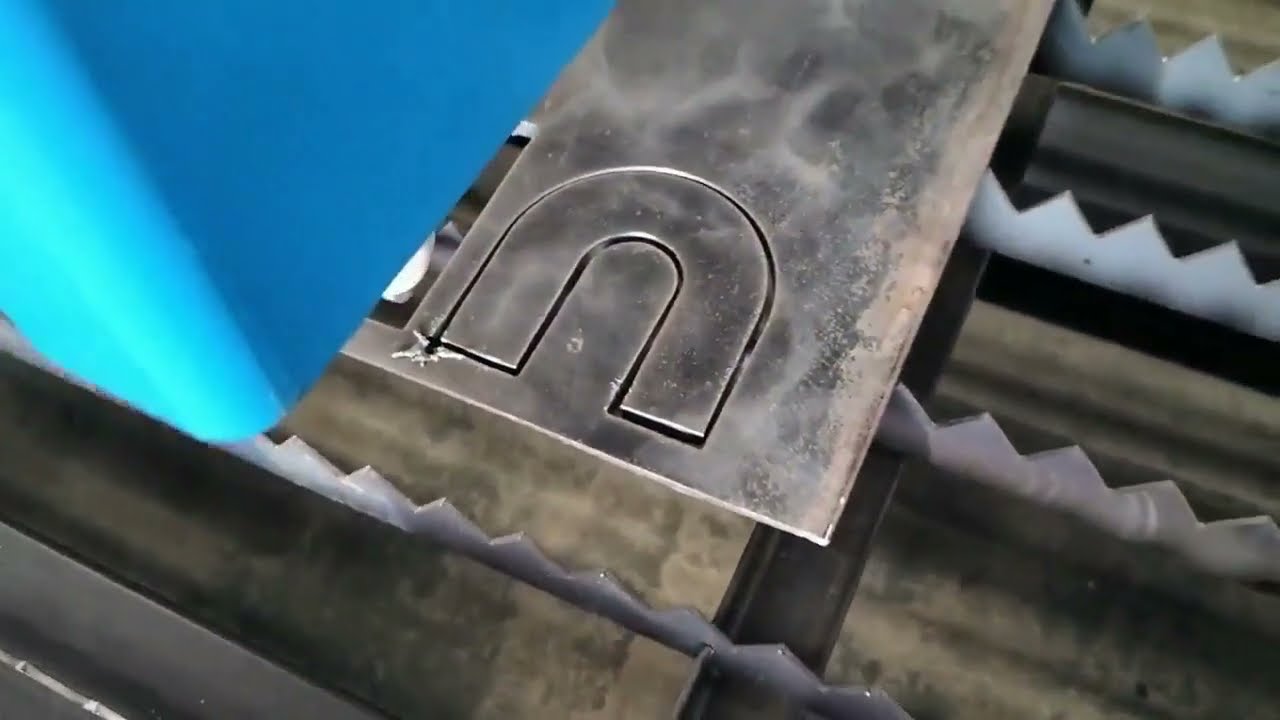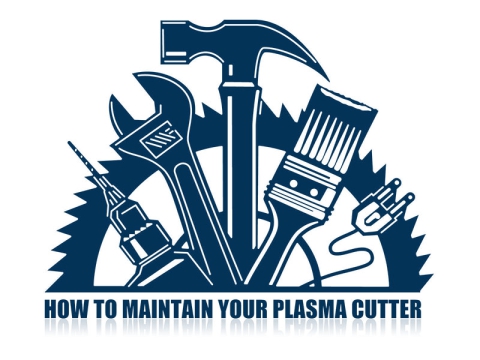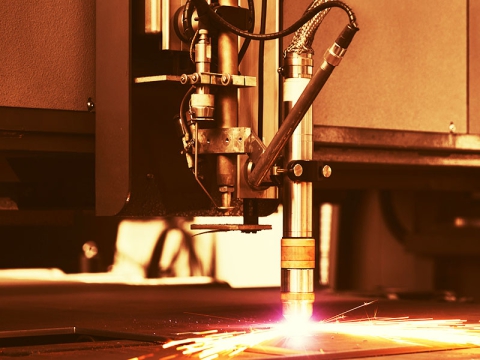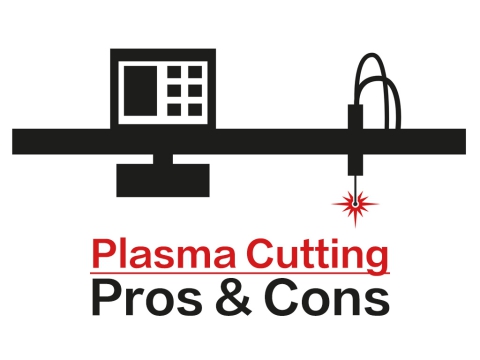What is a CNC plasma cutter?
CNC Plasma cutting is a process that cuts through electrically conductive materials by means of an accelerated jet of hot plasma. Typical materials cut with a plasma torch include steel, aluminum, brass and copper, although other conductive metals may be cut as well. CNC Plasma cutter is often used in fabrication shops, automotive repair and restoration, industrial construction, and salvage and scrapping operations. Due to the high speed and precision cuts combined with low cost, CNC plasma cutter sees widespread use from large-scale industrial CNC applications down to small hobbyist shops.
The basic CNC plasma cutting process involves creating an electrical channel of superheated, electrically ionized gas i.e. plasma from the CNC plasma cutter itself, through the work piece to be cut, thus forming a completed electric circuit back to the CNC plasma cutter via a grounding clamp. This is accomplished by a compressed gas (oxygen, air, inert and others depending on material being cut) which is blown through a focused nozzle at high speed toward the work piece. An electrical arc is then formed within the gas, between an electrode near or integrated into the gas nozzle and the work piece itself. The electrical arc ionizes some of the gas, thereby creating an electrically conductive channel of plasma. As electricity from the cutter torch travels down this plasma it delivers sufficient heat to melt through the work piece. At the same time, much of the high velocity plasma and compressed gas blow the hot molten metal away, thereby separating i.e. cutting through the work piece.
Since CNC plasma cutters produce a very hot and very localized "cone" to cut with, they are extremely useful for cutting sheet metal in curved or angled shapes.
Analog CNC plasma cutters, typically requiring more than 2 kilowatts, use a heavy mains-frequency transformer. Inverter plasma cutters rectify the mains supply to DC, which is fed into a high-frequency transistor inverter between 10 kHz to about 200 kHz. Higher switching frequencies allow smaller transformer resulting in overall size and weight reduction.
The transistors used were initially MOSFETs, but are now increasingly using IGBTs. With paralleled MOSFETs, if one of the transistors activates prematurely it can lead to a cascading failure of one quarter of the inverter. A later invention, IGBTs, are not as subject to this failure mode. IGBTs can be generally found in high current machines where it is not possible to parallel sufficient MOSFET transistors.
The switch mode topology is referred to as a dual transistor off-line forward converter. Although lighter and more powerful, some inverter plasma cutters, especially those without power factor correction, cannot be run from a generator (that means manufacturer of the inverter unit forbids doing so; it is only valid for small, light portable generators). However newer models have internal circuitry that allow units without power factor correction to run on light power generators.
Some CNC plasma cutter manufacturers build CNC cutting tables, and some have the cutter built into the table. CNC tables allow a computer to control the torch head producing clean sharp cuts. Modern CNC plasma equipment is capable of multi-axis cutting of thick material, allowing opportunities for complex welding seams that are not possible otherwise. For thinner material, CNC plasma cutting is being progressively replaced by laser cutting, due mainly to the laser cutter's superior hole-cutting abilities.
A specialized use of CNC Plasma Cutters has been in the HVAC industry. Software processes information on ductwork and creates flat patterns to be cut on the cutting table by the plasma torch. This technology has enormously increased productivity within the industry since its introduction in the early 1980s.
What is a CNC Plasma Cutter used for?

A plasma cutter is a usually used tool for cutting metals for a good type of functions. A hand-held plasma cutter is a wonderful tool for quickly cutting through sheet, metal plates, straps, bolts, pipes, etc. Hand-held plasma torches conjointly create a wonderful gouging tool, for back-gouging weld joints or removing defective welds. A hand-held plasma cutter is usually used for cutting tiny shapes from plate, however it’s not possible to induce adequate half accuracy or edge quality for many metal fabrication. that's why a CNC plasma cutter is critical.
A CNC plasma cutter is a machine that carries a plasma torch, and may move that torch in a very path directed by a pc. The term “CNC” refers to “Computer Numerical Control”, which implies that a pc is employed to direct the machines motion supported numerical codes in a program.
CNC Plasma Cutters are also used in many workshops to create decorative metalwork. For instance, commercial and residential signage, wall art, address signs, and outdoor garden art.
CNC Plasma Cutter vs Hand-Held Plasma Cutter
CNC plasma cutters usually use a different type of plasma system than hand-held cutting applications, one specifically designed for “mechanized” cutting instead of hand-held cutting. CNC plasma cutters use a straight barreled torch which can be carried by a machine, and have some type of interface that can be controlled automatically by the CNC. There are some entry level machines that can carry a torch designed for hand-held cutting, such as the PlasmaCAM machines. But any machine designed for serious manufacturing or fabrication will use a mechanized torch and plasma system.

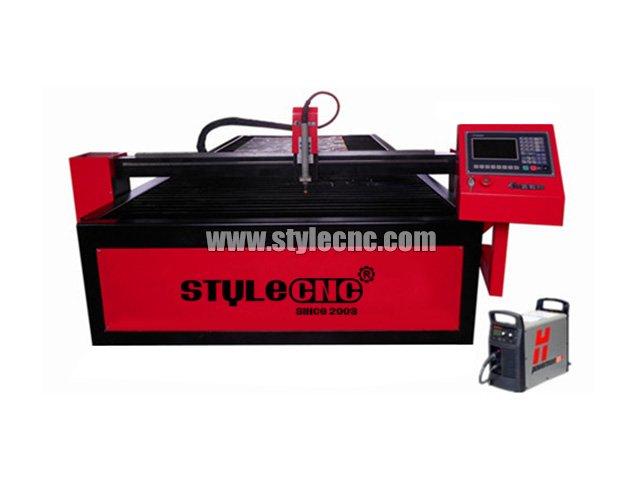
CNC Plasma Cutter Parts
The CNC is also associate degree actual controller designed for machine tools, with a proprietary interface panel and a specially designed management console, like a Fanuc, Allen-Bradley, or Seimens controller. Or it may well be as easy as a Windows primarily based laptop computer running a special package program and act with the machine drives through the LAN port. several entry level machines, HVAC machines, and even some preciseness unitized machines use a laptop computer or personal computer because the controller.
To cut components from plate, the motion of the torch is controlled by the CNC. an area program, sometimes simply a computer file with “M-codes” and “G-codes”, describes the contours of the half and once to show the torch on and off. half programs ar sometimes created by a chunk of package referred to as a “post-processor”, will|which may|which might} take an area pure mathematics from a CAD file and translate it into M-codes and G-codes that the CNC can browse.
A CNC plasma cutter conjointly needs a drive system, consisting of drive amplifiers, motors, encoders, and cables. there'll be a minimum of 2 motors, one for the coordinate axis and one for the coordinate axis. there's a drive electronic equipment for every motor, that takes a low-power signal from the CNC and turns it into a higher-powered signal to maneuver the motor. every axis incorporates a feedback mechanism, sometimes associate degree encoder, that creates a digital signal indicating however way the axis has captive. Cables take the facility from the electronic equipment to the motor, and carry the position signals from the encoder back to the CNC.


The CNC reads the half program then outputs signals to the machine’s drive system that moves the torch within the desired direction at the programmed speed. The CNC reads the encoder feedback and makes corrections to the drive signals pro re nata to stay the torch motion on the programmed path. All of the physics within the CNC and drive system work and communicate terribly quickly, typically mensuration and change position data each few milliseconds. this permits the machine motion to be sleek and correct enough to provide plasma cut components with a sleek, straight, consistent edge quality, and precise half dimensions.
A CNC plasma system can have some style of “I/O system”, associate degree electrical system that handles Inputs and Outputs. this is often however the CNC activates the plasma at the acceptable time, by turning on associate degree output that closes a relay, for instance. The CNC uses inputs to grasp once the plasma arc has started, and is prepared to maneuver. Those ar the foremost basic Inputs and Outputs needed, however clearly there are often more.
Many alternative sub-systems and options are often additional, like arc voltage height management systems, plasma bevel systems, integrated plasma management systems, and so on. however the fundamentals of a CNC plasma cutter delineated on top of are going to be common to any or all such machines, from the best to the foremost complicated.
In recent years there has been even more development. Traditionally the machines' cutting tables were horizontal, but now vertical CNC plasma cutting machines are available, providing for a smaller footprint, increased flexibility, optimum safety and faster operation.
